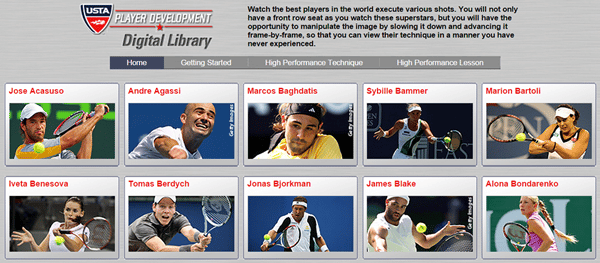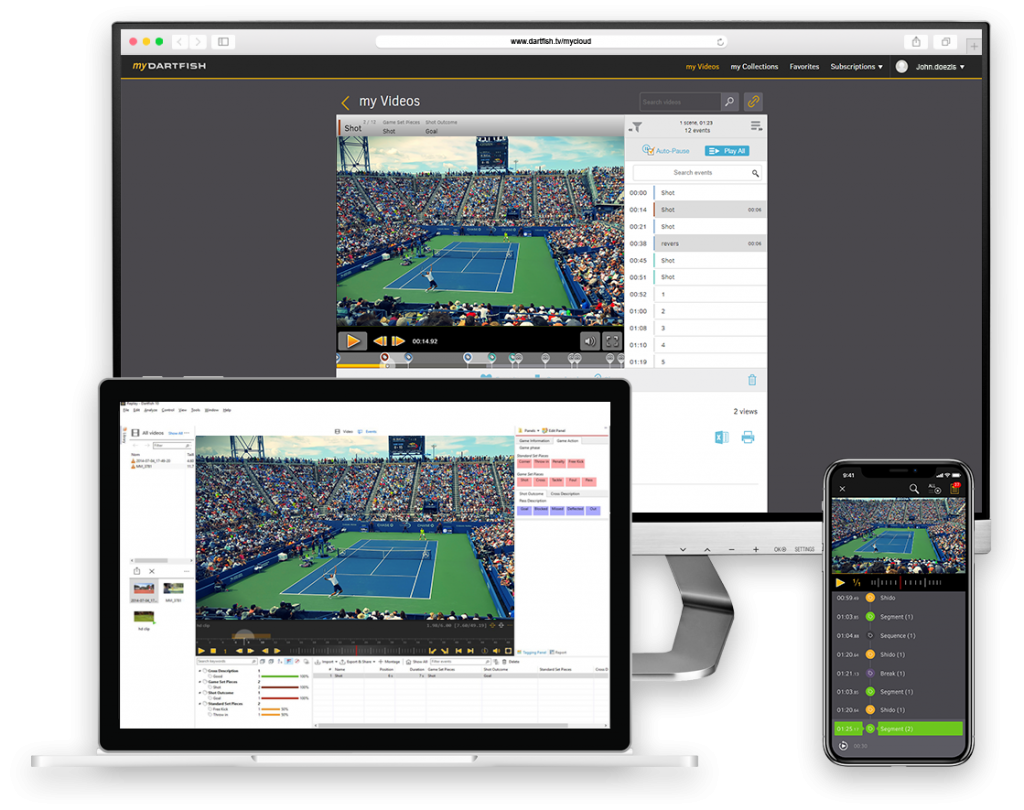The United States Tennis Association uses Dartfish at all stages of coach education; from forming a strategy, defining what to teach, use as a learning aid, right through to informing continuous development. David Ramos is the man in charge and here is his story.
Imagine for a moment that your job is to develop a high performance coaching strategy for a sport where coaches and players are scattered across a landmass the size of the USA. You have some outstanding, best-in-the-world expertise to call on but that sits with individuals and has evolved in separate microcosms. Your challenge? To develop the next generation of coaches to the same level and hopefully beyond. How do you do that? How do you do that when there is no common consensus or language describing what it is that your athletes and coaches are aiming to achieve?
That’s exactly the dilemma that was faced by David Ramos, or @dartfishdave as many of you may know him, when he took on the USTA’s National Manager for Coaching Education & Performance role in 2010. At that time David was no stranger to Dartfish technology. He had started with software v2.0 in 2002 and since then had built up a comprehensive Player Development Digital Library with Dartfish Mediabooks as the foundation. For seventy-three of the world’s best players he had identified key positions within videos of various shots played and, using Dartfish, had annotated and described the fundamentals of technique being used.

In doing so he recognized that, in his words, “No standard technique or swing path for a stroke is optimum for all players. Each player is unique with his or her own individual physiological, anthropometric, and psychological characteristics; therefore, optimal technique for one player may not be optimal for another” going on to explain, “Players can acquire optimum technique by learning the mechanical fundamentals of stoke production, while still evolving their own individual stroke characteristics. You will find that all of the top players have mastered the fundamentals of technique, yet their technical styles of hitting the ball are extremely different.” So when David started in his new role he already had put in place the common coaching language that he would have to develop. Furthermore, a new Dartfish tool – the dartfish.tv online video platform – was in its infancy but its arrival was perfect timing, because it took his Mediabooks several leaps forwards in features, interactivity and the possibilities of allowing any of his disparate experts to share and contribute that expertise.
With Jose Higueras and Patrick McEnroe, he set about developing a coaching philosophy. David explains further, “Dartfish was a huge part of that. One of the first things we wanted to do was align our national staff using a teaching and coaching philosophy: so that we talked the same tennis language; we had a similar use of drills and, when we talked about things like ‘making’ or ‘taking ground’, we had to come up with a way of describing those sort of things.”
“We spent a lot of time looking at video, Tagging the grand slam finals and going though and looking at whatever findings we had that would confirm or deny the suspicions about the philosophy that we had.”
In addition to technique, they used Dartfish Tagging to quantify the details such as, for example, the number of balls taken behind the baseline versus stepping in. Their goal was to develop insights as to what was going on in the professional game and that all fed into the teaching provided to coaches participating in the High Performance Coaching Program.
If that sounds a little one sided, those same coaches were required by the program to produce and share their own technical analysis of their players. They did this using the Dartfish Express app, which shares the same key position analysis and dartfish.tv publishing features that David had exploited using its PC software big brother. Another requirement was to produce a video-based tactical analysis of match play using the Dartfish Easytag app. The end goal of both analyses was to create a development plan for the players based on their findings and thereby demonstrating, not only that the coaching philosophy was being understood, but also a mastery of the same technologies that had facilitated its development.
Where next for coach development?
On-going coach education is facilitated by the USTA in several ways, one of the most important being their national coaching meetings. In these, David always features video presentations on key aspects of the sport. Let’s consider just one example: David tagged up each of the eight 2012 grand slam finals and, although it wasn’t something he had been looking for, he identified seven ways of approaching the net. He wondered how often each type of attack was used and which of these yielded the highest winning percentages and his Dartfish software spat out the raw data for him. What was the significance of the numbers though? This question was taken to the national coaching meeting for discussion, the coaches preparing in advance by viewing highlights movies rendered by Dartfish from the attacks that David had tagged and shared on dartfish.tv.
David concludes, “It really added a whole lot to our national coaching meetings. We were all talking the same language so when we were talking about ‘swing volley’ or ‘no transition’ everybody had seen videos of those things…. And we’d go on to discuss drills to teach these skills”
Today the USTA’s channel is among the best used on dartfish.tv with over 7600 videos. In addition to the latest Player Development Library stroke analysis, coaches can review presentations from coaching meetings and regional training centre webinar recordings. They are sharing videos of teaching and training methods, with those featuring their players working with guest coaches being particularly eagerly watched; whether that be the USA’s own Jay Berger talking about live ball situations, or international coaches such as Jose Higueras talking about “Walking the ball” – completely new terminology and techniques contributing to USTA’s coaching lexicon.
For readers of this blog, the good news is that, although the high performance coaching material is understandably kept for USTA eyes only, there is also a wealth of public content featuring drills, strength and conditioning routines and stroke technique. You can get a flavor of what is on offer to their coaches, either on the USTA channel or by downloading the USTA content app (iOS and Android).
This article was based on a webinar which David Ramos delivered for Dartfish in August 2014. You can watch the full webinar or go directly to the part where David explains the development of the coaching program.
And, of course, you can catch up with the latest from @dartfishdave on Twitter!

Comments are closed.